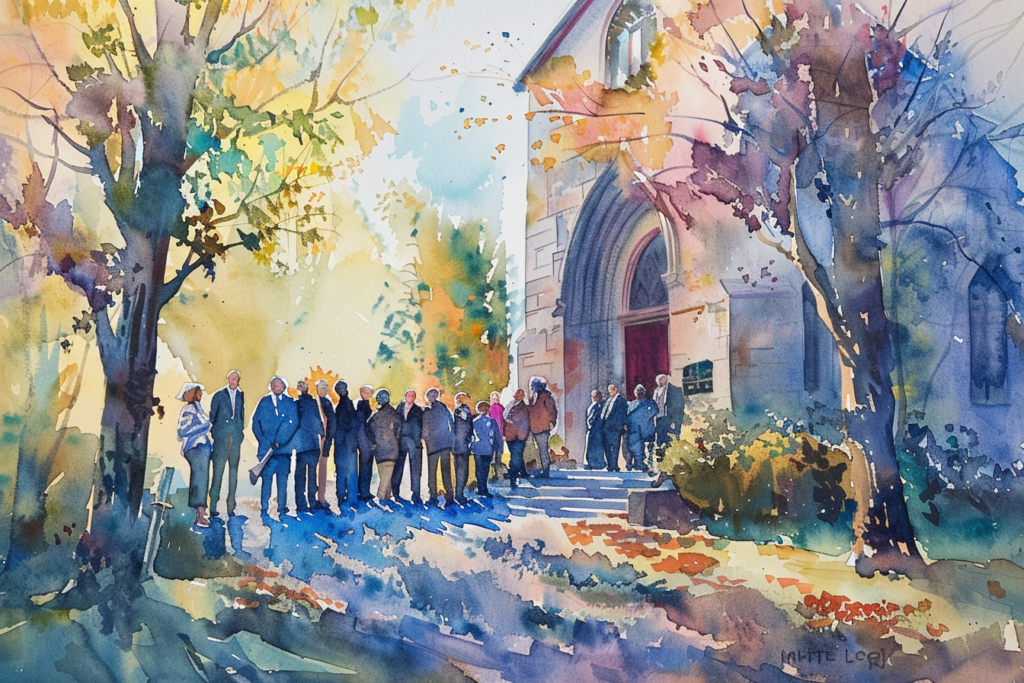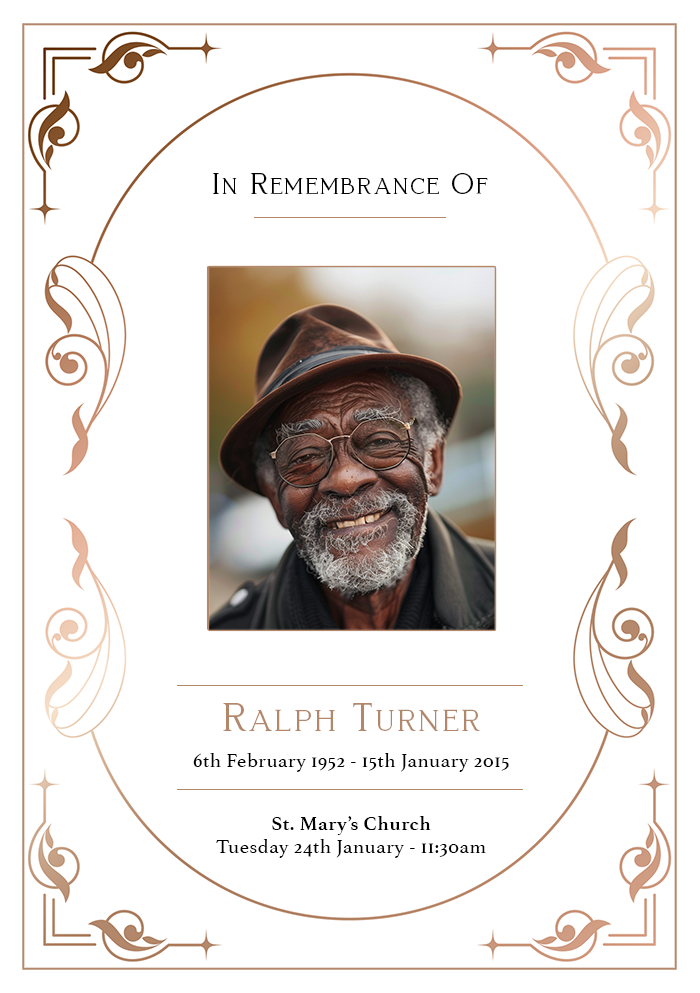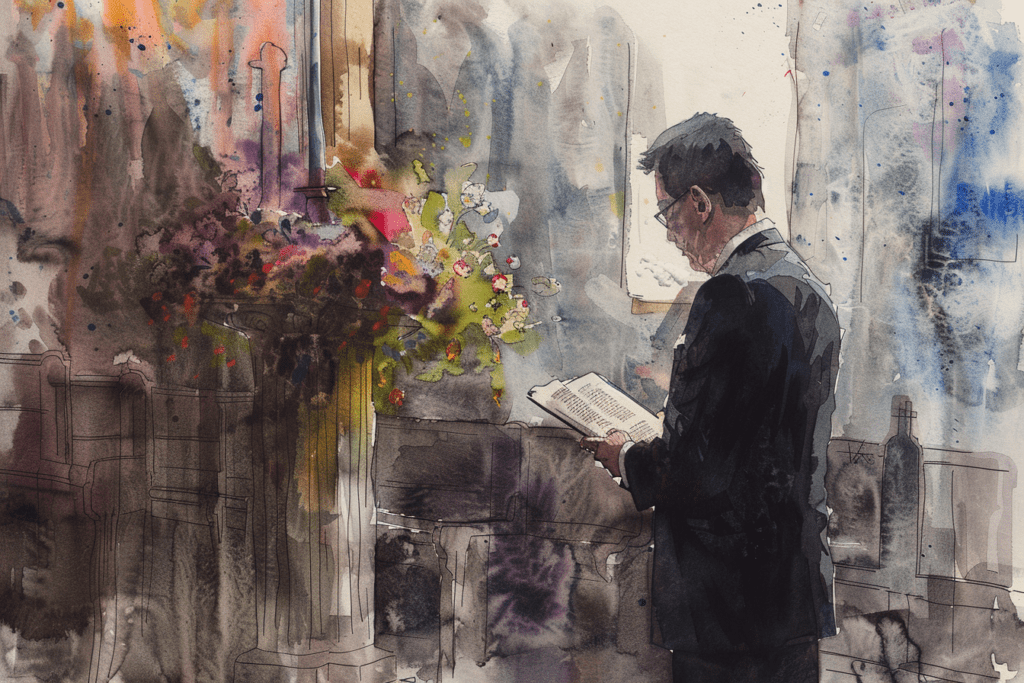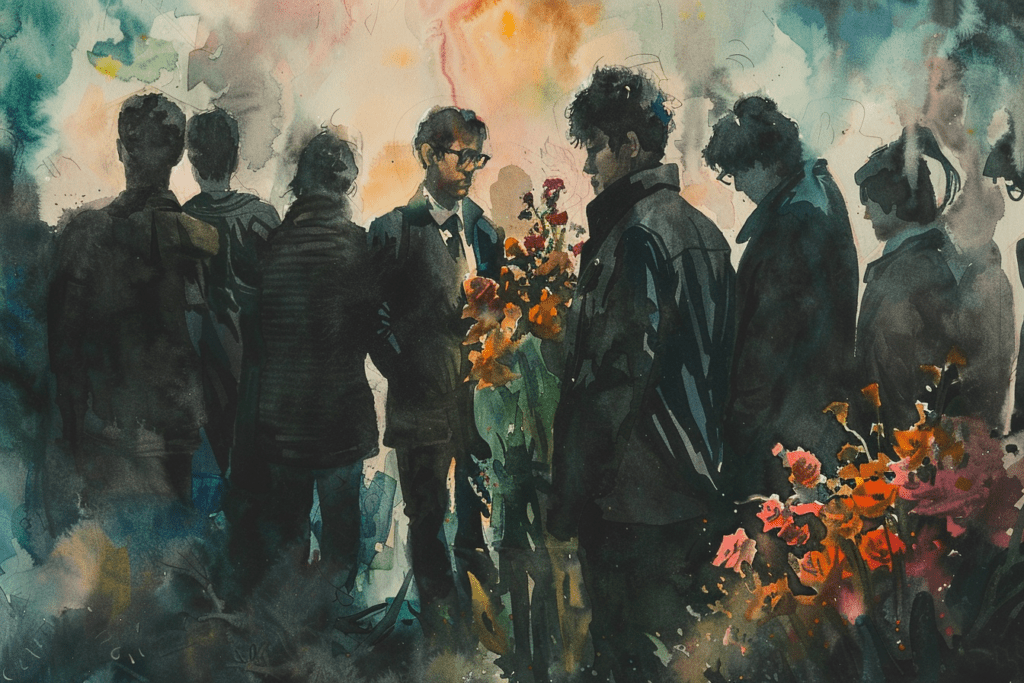
Preparing Photos for a Funeral Order of Service Booklet



Introduction

Losing a loved one is one of life’s most difficult experiences. During this challenging time, creating a funeral order of service booklet can be a meaningful way to honour and remember them.
This guide will help you prepare photos for the booklet, ensuring they capture the essence and memory of your loved one in a respectful and heartfelt manner.
After reading the article please consider our collection of personalised order of service booklets.




Article Contents

Choosing the Right Photos

Reflecting Their Life
When selecting photos, aim to choose images that reflect the significant moments and milestones in your loved one’s life. These could include:
- Childhood memories
- Special family gatherings
- Milestones such as graduations and weddings
- Favourite hobbies and pastimes
- Photos with close friends and family
Each photo should tell a story and represent a part of their journey, highlighting the joy and love they shared with others.
Quality and Resolution
It’s important to use high-quality, high-resolution photos to ensure they look good in print. Digital photos should be at least 300 dpi (dots per inch) for the best results.
Avoid using blurry or pixelated images, as they can detract from the booklet’s overall appearance.
Black and White vs Colour
Deciding between black and white or colour photos depends on the tone and style you want for the booklet. Black and white photos can add a timeless, classic feel, while colour photos can bring vibrancy and warmth.
Mixing both can also be effective, depending on the context of each image.

Organising the Photos

Chronological Order
One approach is to arrange the photos chronologically, guiding attendees through the different stages of your loved one’s life. This can create a narrative flow, allowing people to see the journey and growth over the years.
Thematic Sections
Alternatively, you can organise photos into thematic sections, such as family, friends, hobbies, and milestones. This method allows you to highlight various aspects of their life and can be a beautiful way to showcase their diverse experiences and relationships.
Captions and Descriptions
Including captions and brief descriptions can provide context and enhance the storytelling aspect of the booklet. Captions can mention the time, place, and people in the photos, or share a short anecdote or memory. This personal touch can make the booklet even more meaningful.

Preparing Digital and Physical Photos

Scanning Physical Photos
If you have physical photos, you’ll need to scan them to create digital copies. Use a high-resolution scanner to ensure the best quality.
Make sure to clean the photos and scanner bed to avoid dust or smudges. Save the scanned images in a high-quality format, such as TIFF or JPEG.
Editing and Enhancing
Digital photo editing tools can help enhance your photos, adjusting brightness, contrast, and colour balance. Basic editing can make a significant difference, but avoid over-editing, which can make photos look unnatural.
Many simple, user-friendly editing tools are available online, such as Canva, Adobe Spark, or even built-in smartphone apps.
Professional Help
If you’re not comfortable with photo editing or need help with more complex tasks, consider seeking professional assistance.
Many services specialise in photo restoration and enhancement, ensuring your photos look their best for the booklet.

Layout and Design

Choosing a Template
Selecting a template can simplify the process of designing the booklet. Many funeral service providers offer templates, or you can find downloadable ones online. Choose a template that matches the tone and style you want, whether it’s elegant, modern, or traditional.
Page Layout
Consider the layout of each page, ensuring a balanced and cohesive design. Leave enough white space to avoid a cluttered look, and use consistent margins and spacing. Mixing full-page photos with smaller images can create visual interest and keep the booklet engaging.
Typography
Select fonts that are easy to read and appropriate for the solemnity of the occasion. Typically, a combination of a serif font for headings and a sans-serif font for body text works well. Ensure the text is large enough to read comfortably, especially for older attendees.
For more information on fonts please see our article – Popular Fonts for Funeral Stationery and How to Choose Them.
Cover Page
The cover page is the first thing attendees will see, so it should be special and inviting. It usually includes a photo of your loved one, their name, birth and death dates, and a title such as “Celebrating the Life of [Name]” or “In Loving Memory of [Name]”. A simple, elegant design works best for the cover.

Printing the Booklet

Choosing a Printer
Decide whether to print the booklet at home or use a professional printing service. Professional printers can offer higher quality and a variety of paper choices.
If you choose to print at home, ensure you have the right paper and enough ink to avoid last-minute issues.
Paper Quality
Select a high-quality paper that feels substantial and looks good in print. Glossy paper can make photos pop, but matte paper is often easier to read.
Consider a heavier-weight paper for the cover to give the booklet a more polished finish.
Binding Options
Binding options include stapling, saddle-stitching, or perfect binding. Stapling is the simplest and most cost-effective method. Saddle-stitching involves folding the booklet and stitching it along the spine, offering a more professional look.

Final Touches

Proofreading
Before printing, carefully proofread the booklet to catch any errors or typos. It can be helpful to have another person review it as well, as fresh eyes may catch mistakes you missed.
For a more in-depth look into proofreading please see our article – How to Proofread Your Funeral Stationery Before Printing.
Assembling the Booklet
Once printed, assemble the booklets neatly. If using a professional printer, they will often handle this for you. If assembling at home, ensure the pages are aligned correctly and bound securely.
Distributing the Booklet
Plan how you will distribute the booklets at the service. Place them at the entrance for attendees to take, or hand them out personally. Having a few extra copies on hand can be a good idea in case of unexpected guests.

Conclusion

Creating a funeral order of service booklet is a touching way to honour the memory of your loved one. By carefully selecting and preparing photos, you can craft a beautiful keepsake that celebrates their life and provides comfort to those who mourn.
This booklet will serve as a cherished reminder of the love, joy, and memories shared with the departed.







